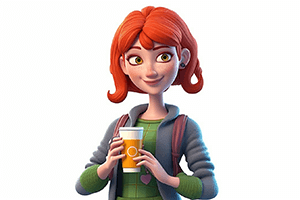
Filter Coffee: The Importance of Proper Filtration for Safe Consumption
Learn why proper filtration of your filter coffee is crucial for a safe and enjoyable drinking experience. Find out how to achieve this with our simple guide.
How to Properly Filter Your Filter Coffee for Safe Consumption
Filter coffee is the most popular type of coffee consumed worldwide. It is a simple process that involves passing hot water through ground coffee beans and a filter. However, filtering coffee is not as easy as it seems. The type of filter used, the brewing temperature, and the brewing time can all have an impact on the quality and safety of the coffee. In this article, we will discuss how to properly filter your filter coffee for safe consumption.
Types of Filters

There are two main types of filters used for brewing filter coffee: paper filters and metal filters. Paper filters are the most common type of filter used in home coffee brewing. They are made from cellulose and are disposable. Paper filters are very effective at removing coffee oils and sediment from the coffee, which can improve the taste of the coffee. They are also very easy to use and dispose of.
Metal filters, on the other hand, are reusable and are made from either stainless steel or gold. They are designed to let more coffee oils and sediment through, which can give the coffee a richer taste. However, metal filters are not as effective at removing coffee oils and sediment as paper filters, which can have an impact on the overall quality and safety of the coffee.
Brewing Temperature and Time
The brewing temperature and time are also important factors to consider when filtering coffee. The ideal brewing temperature for filter coffee is between 195 and 205 degrees Fahrenheit. Water that is too hot can over-extract the coffee, resulting in a bitter taste. Water that is too cold can under-extract the coffee, resulting in a weak and watery taste.
The brewing time for filter coffee should be between 4 and 5 minutes. Brew times that are too short can result in an under-extracted coffee, while brew times that are too long can result in an over-extracted coffee.
Filtering for Safety
Filtering coffee is not just about improving the taste of the coffee, it is also about ensuring that the coffee is safe to drink. Coffee contains a number of compounds, including caffeine and antioxidants, which can have both positive and negative effects on the body. However, coffee can also contain harmful compounds, such as mycotoxins, which are produced by certain types of fungi that can grow on coffee beans.
Using a properly filtered coffee can help to reduce the levels of mycotoxins in the coffee, making it safer to drink. Paper filters are the most effective at removing mycotoxins from coffee, while metal filters are less effective. If you are concerned about the safety of your coffee, it is recommended that you use a paper filter.
Conclusion
Filter coffee is a simple and popular way to enjoy coffee, but it is important to filter it properly to ensure that it is safe and delicious. Using a paper filter and brewing at the right temperature and time can help to improve the taste and safety of your coffee. So, the next time you brew a cup of filter coffee, remember to take these factors into consideration to ensure a great tasting and safe cup of coffee.
